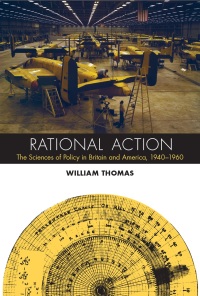Localized Historiography February 9, 2009
Posted by Will Thomas in Methods.trackback
I think Christopher and I are slightly out-of-sync concerning the terminology of historiographic “atavism” (which is his very useful term). An atavism is a degradation. If we take the qualities of a historiography to be simply the contents of the historiographical archive, then atavism is impossible, since the archive cannot be destroyed (one would hope). However, an archive is only as good as an understanding of its contents, meaning that if new historical work consistently fails to engage with its insights, the historiography is degraded simply through lack of use.
Christopher identifies the qualities of writing that he characterizes as “atavistic” scholarship. My argument would be that certain styles of writing are more apt to risk atavism than others in much the way he describes, but that atavism itself can be traced to no single work. It is part of the insidiousness of historiographic atavism that no individual can be held responsible for it.
The lack of accountability is related to the technique of “perspective layering” that I mentioned briefly in my post on the “Rashomon posture”. If new perspectives are added onto present ones, the new perspectives do not necessarily provide a “corrective” to previous perspectives. They can displace them. It is only through either the maintenance or consolidation of perspectives that allows perspective layering to be a constructive rather than an atavistic practice. It requires what Christopher calls a “court of understanding”.
Courts of understanding, and thus perspective layering, operate most fruitfully at the level of localized historiography. Within a localized historiography, a small set of scholars is familiar with specific sets of tightly interwoven details both about the historiography and the history being studied, which serve to filter new writing and new interpretations of the historical record, and to incorporate them into the set’s debate in judicious ways so that no previous understanding is lost.
Even contributions to localized historiographies that commit gross errors, that neglect prior historiography, that do not identify their significance with respect to the subject matter, or that offer untenable radical interpretations of the record can still have a progressive effect, and have, at worst, a null effect, because they are always judged within the court of understanding. (Of course, it is also true that such works will have a more difficult time reaching press given the existence of informed referees within the court.)
For example, Galileo scholars can successfully layer, say, Stillman Drake’s account of Galileo’s intellectual output with Mario Biagioli’s account of Galileo’s political maneuverings (to pick up on last week’s hump day history post), along with all the rest of the mountain of Galileo scholarship, and derive a rich-if-unsynthesized (“coherent-if-complex”) picture of Galileo’s activities. This is possible, because to work in the Galileo Industry requires not only bibliographical nimbleness, but a detailed understanding of the chronology of Galileo’s life, the content of his works, and the life and works of the people he knew and knew of.
The richness of localized historiographies can make attempting a definitive synthesis into a clumsy, if still practicable, project. In such circumstances, maintaining a series of layered perspectives may be preferable to attempting such a synthesis. Although, regularly producing reasonably sophisticated syntheses for non-specialist professionals should be considered an obligation of a localized historiography.
Some questions:
- Does increased sophistication through layering perspectives at the local level cloak historiographic atavism at the non-local level? Does success within one’s own locality of research breed complacency concerning the state of knowledge at the profession-wide level?
- Are localized historiographies becoming decontextualized on account of their insular nature? Were they ever well contextualized? (My suspicion here is that more reckless statements of periodization of certain attitudes and genres of practice are made today, but that things like the “place of Darwin” or the “place of Einstein” are better understood.)
- Do courts of understanding even exist at the non-local level? If so, are they willing to assert themselves to prevent historiographic atavism, or do they assume that perspective layering is automatically progressive? If they do assert themselves, in what venues do they do so? Is argumentation in these venues effective in preventing atavism?
I don’t have good answers to any of these quetions yet, nor am I certain if they are the correct questions to ask. Nevertheless, I feel fairly confident that a “fracturing of concerns” (both specialization by period and place, as well a fracturing of perspectives between museology, sociology, critique, epistemology, and historical explanation) has had historiographic consequences that we should attempt to articulate better on a regular basis.

Comments»
No comments yet — be the first.